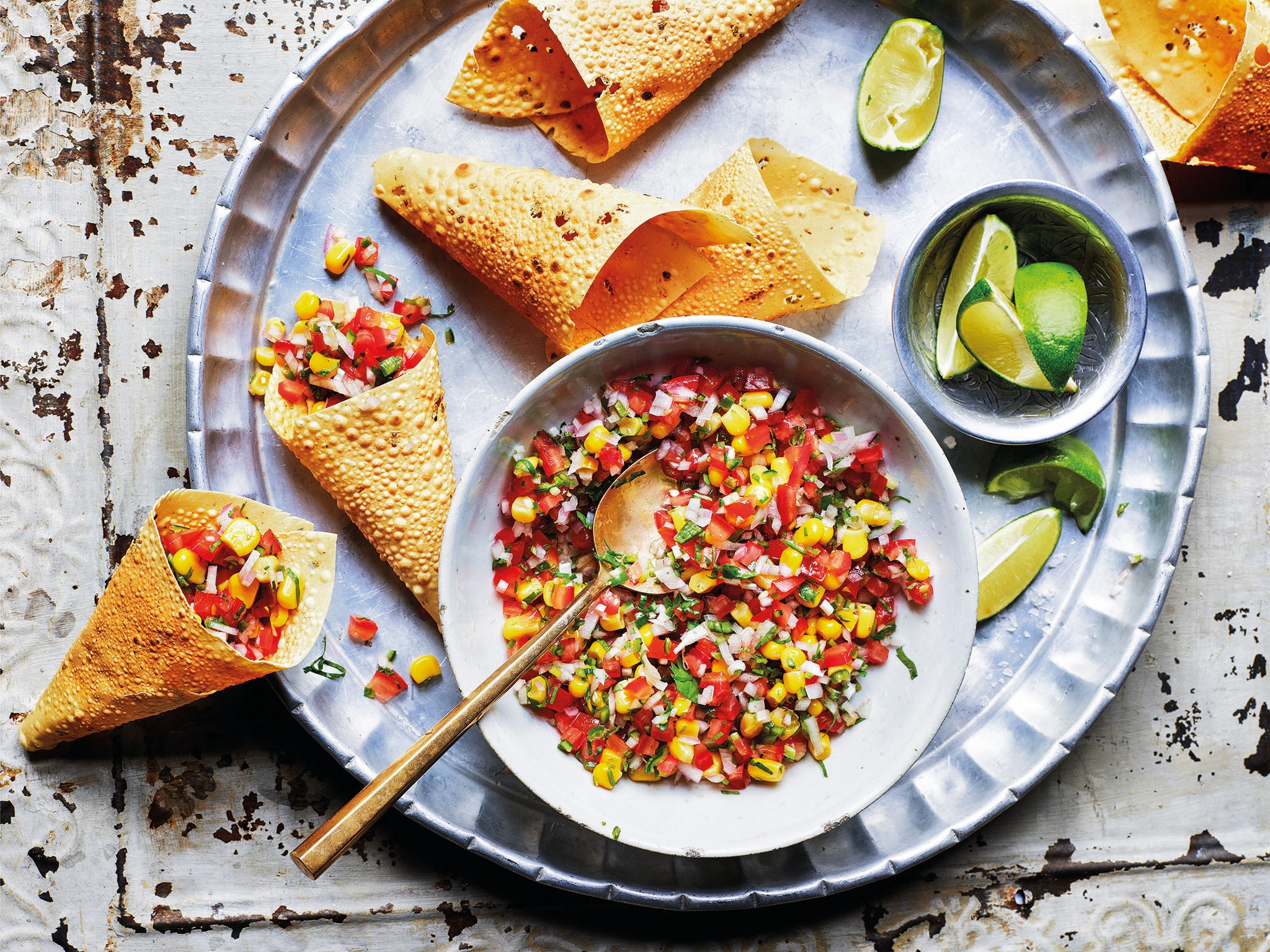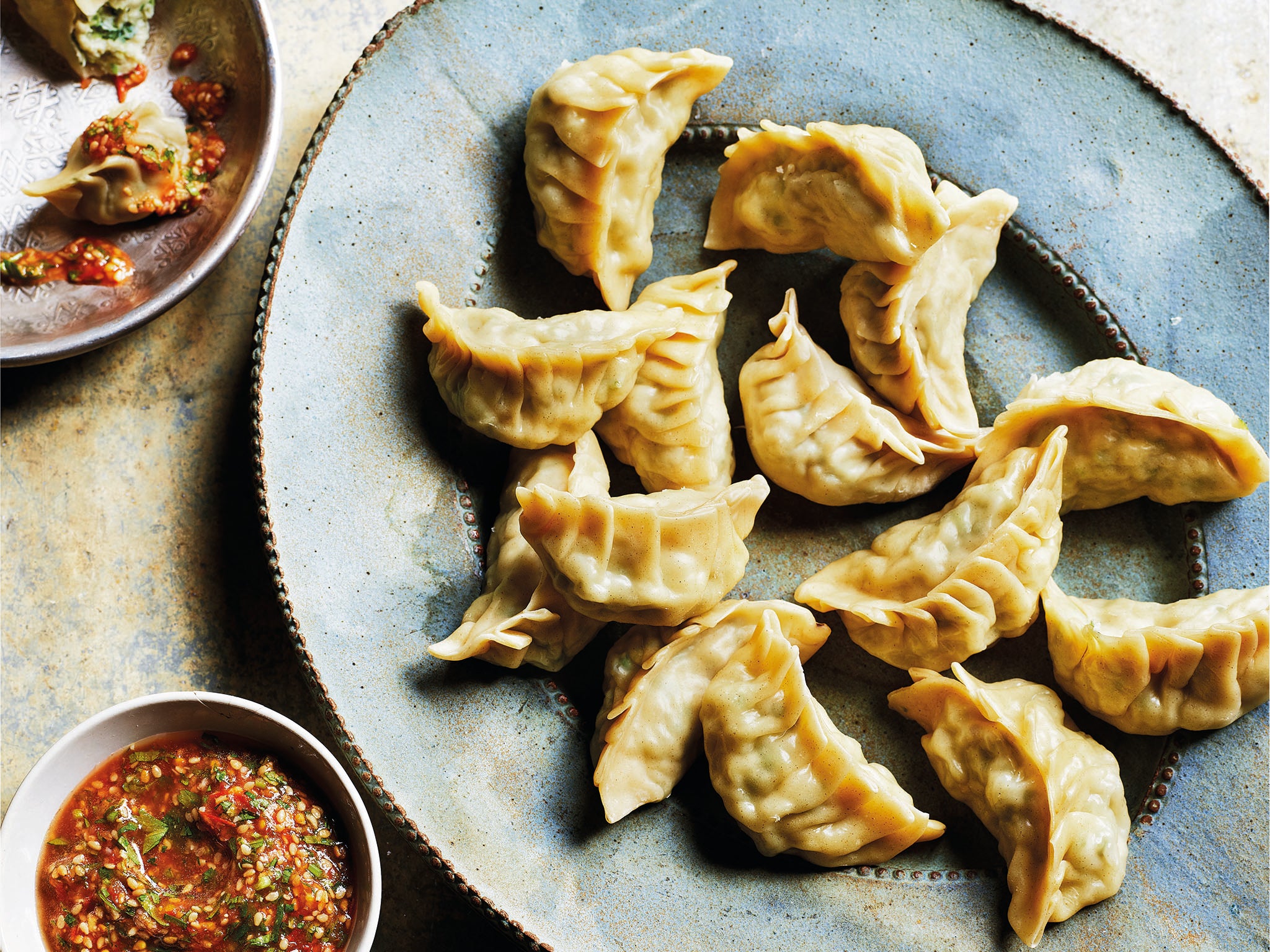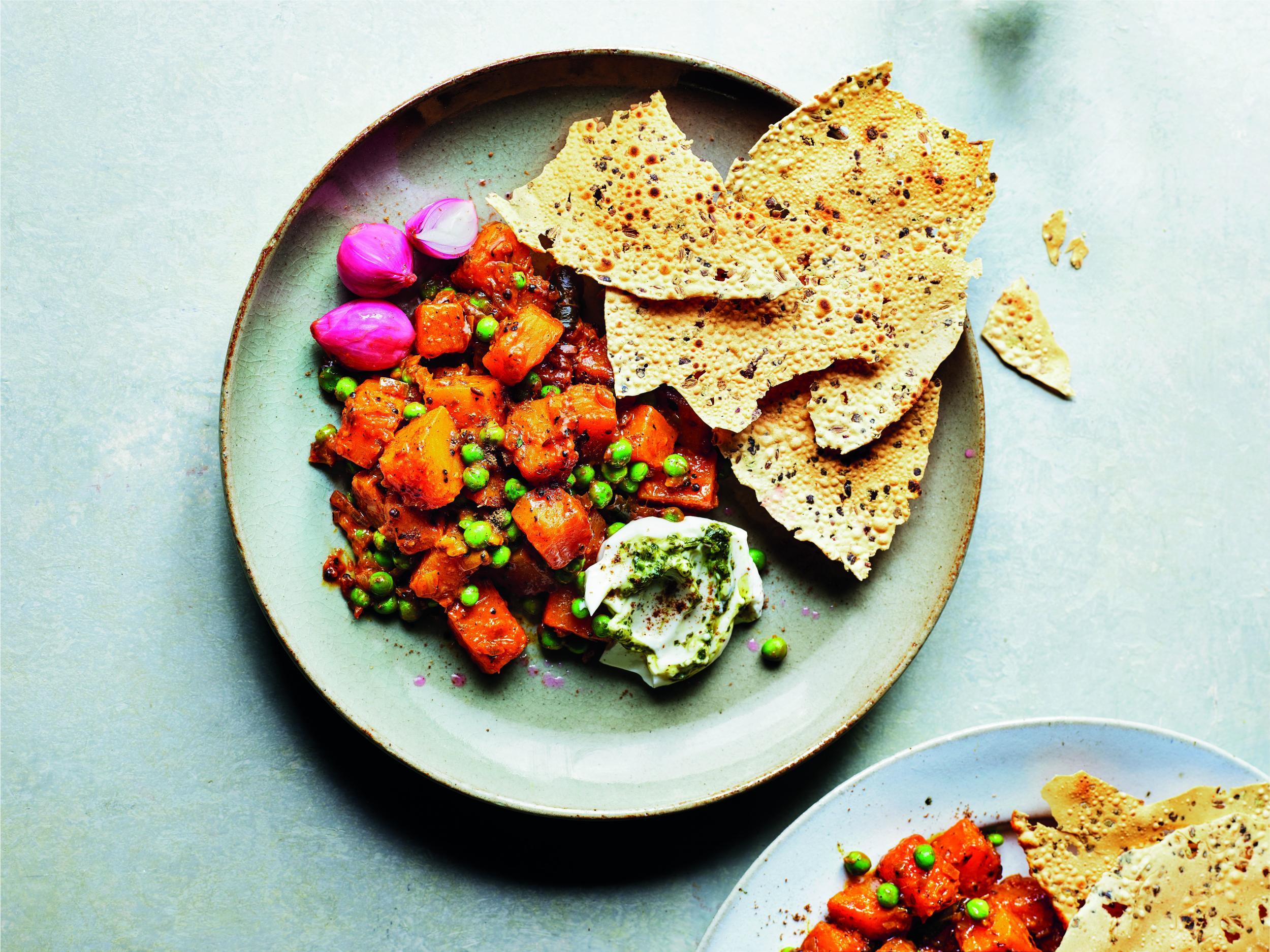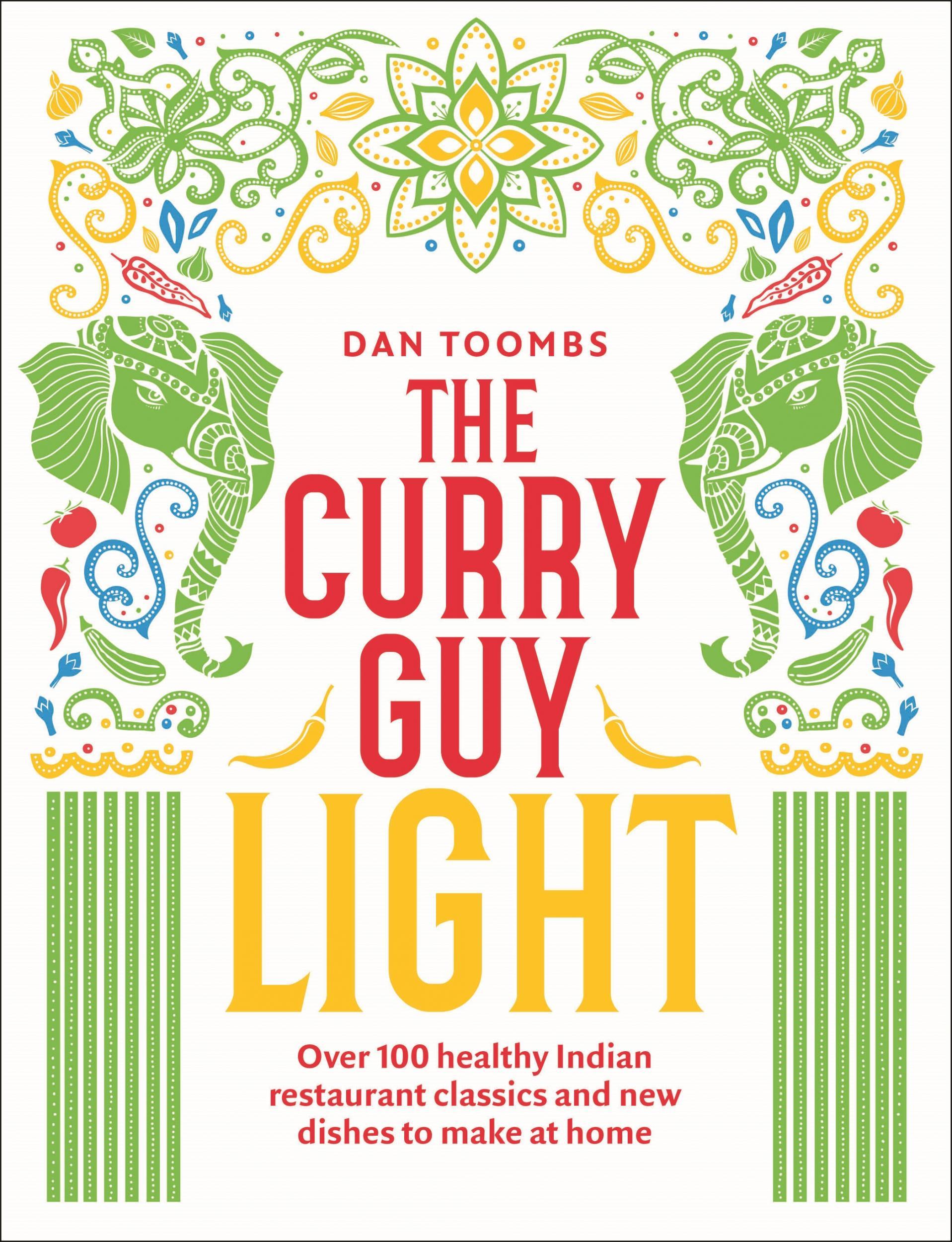‘The Curry Guy Light’ cookbook: Recipes from papad cones to chicken momos
If you thought you couldn’t make a health-conscious Indian meal, think again: Dan Toombs is back with more delicious recipes that are easier on the calories. Here are three to try

Stuffed papad cones
Makes 8
Papad cones make delicious and colourful starters. I learned to make them at a hotel I was staying at in Munnar. I actually thought the cones had been fried, as they were crispy and good. What a great find! When I teach my curry classes, I usually include this recipe. They are fun to make and quite easy too. You can vary this recipe with many different fillings, but the tomato chutney used here is a great place to start. I like to use papads flavoured with cumin and black pepper. These are available at most Asian markets, but you could also use plain ones. No oil is used in this recipe, so you can enjoy these as a quick and healthy snack anytime.
Prep time: 10 minutes
Cooking time: 15 minutes
3 medium tomatoes
½ onion, finely chopped
2 green chillies, finely chopped (more or less, to taste)
3 tbsp cooked sweetcorn (colourful but optional)
1 tbsp finely chopped coriander
½-1 tsp chaat masala (optional)
Salt, to taste
Juice of 1 lime
4 papads, cut in half with scissors or a sharp knife
Quarter the tomatoes and remove the seeds so that you are left with tomato petals with most of the excess juice removed. Dice finely and place in a bowl with the remaining ingredients up to and including the lime juice and mix well. Remember that chaat masala (if using) has black salt in it, so this should be considered when seasoning with salt. Place the chutney in the fridge while you make the papad cones. Heat a dry frying pan over a medium heat and place one of the papad halves in it.
Cook for about 15 seconds until it begins to cook through. Use a clean tea towel to press it down so that it cooks evenly. Flip it over and cook the other side. Repeat by turning again and again until the papad is cooked through and small bubbles appear. The cut side of the papad will become the top of the cone. While the papad is still hot, roll it into a cone shape and hold the seam for a fewseconds until it stays in a cone shape of its own accord. Repeat with the remaining papads.
To serve, fill each cone with the prepared tomato chutney and serve immediately.
Note: Once filled with the tomato chutney, the papad cones will become soggy if left too long. So if not serving immediately, fill them just before you want to serve them or let people fill their own cones. The cooked cones can be made a day earlier and stored in an airtight container.

Steamed chicken momos
Makes about 24 (serves 6)
In my other books, I featured a few popular samosa recipes. I think of momos as a healthier, steamed alternative that are just as good as any samosa I’ve had! In fact, I prefer them and they are easier and a lot less messy to make. This is a recipe that was sent to me by my friend Santosh Shah, executive chef of Baluchi in London. His creative cooking style is amazing, so I’m positive you are going to love this recipe. This dish is delicious served with a simple soy sauce, but I like to serve it with Santosh’s roasted tomato and sesame chutney.
Prep time: 1 hour, plus resting time
Cooking time: 10-12 minutes
For the wrappers
200g plain flour, plus extra for dusting
¼ tsp baking powder
Good pinch of salt
100ml water
3 tbsp cornflour, for dusting
For the filling
500g raw chicken breast, finely chopped (it shouldn’t look minced, but pretty close to that)
1 red onion, finely chopped
2 garlic cloves, finely chopped
5cm piece of ginger, peeled and finely chopped
4 green chillies, finely chopped
2 spring onions (scallions), chopped
1 tsp black peppercorns, crushed
2 tbsp chopped coriander
1 stick of lemongrass, finely chopped
50g butter
1¼ tsp salt
Juice of 1 lemon
Start by making the wrappers. Sieve the flour and baking powder onto a clean work surface. Make a well in the middle and sprinkle in the salt. Add half the water and mix well with your hands. Add the rest of the water and continue to work until the dough is smooth. Knead well for about 5 minutes, then place the dough ball in the bowl, cover and set aside for 30 minutes. Transfer the dough onto a clean work surface lightly dusted with flour.
Roll the dough out with your hands into a long cylindrical shape about 2.5cm in diameter. Cut into 24 or so 2.5cm pieces. Dust with flour and flatten each piece into a circular shape with your hands. Using a rolling pin, roll out each piece into a circle 7.5-9cm in diameter and 2mm thick. Dust the circles with the cornflour and stack them on top of each other.
Cover the wrappers with a damp tea towel to prevent them from drying out. To make the filling, mix the chicken with all the other ingredients. When ready to make the momos, take a wrapper, wet the inside circular edge with water, place a heaped teaspoonful of mixture in the middle and fold it over. Press the two corners together to begin the seal. Make small folds towards one of the corners and continue until you have completely sealed the momo, as photographed.
This looks great but if you find this difficult, the most important thing is that the momos are sealed shut. They will still taste great! Repeat with the remaining momos. Transfer the momos to a steamer set at a high heat (you may have to do this in batches) and steam for 10-12 minutes until the filling is cooked through.

Butternut squash curry
Serves 4
This hearty squash curry is delicious served over rice or scooped up with masala rotis. In the photograph I have served it with dry-fried papadums, using the same method used in the papad cone recipe. This is common in India, where they enjoy lots of different textures in a meal. In the UK we tend to see papadums only as starters, but their crispy texture and flavour goes so well with the soft, cooked squash. Sometimes I cook this just as the recipe is and then I puree any leftovers for a smoother and creamier variation.
Prep time: 10 minutes
Cooking time: 20 minutes
1½ tbsp rapeseed oil
1 tsp black mustard seeds
1 tsp cumin seeds
10 fresh or frozen curry leaves
1 red onion, finely chopped
2 green chillies, finely chopped (more or less, to taste)
1½ tbsp garlic and ginger paste
½ tsp ground turmeric
1 tsp chilli powder (more or less, to taste)
1 tsp ground coriander
1 medium butternut squash, peeled, seeded and cut into 1.5cm cubes (roughly 700g prepared weight)
400ml low-fat coconut milk
200g fresh or frozen peas
Salt, to taste
½ tsp garam masala
3 tbsp finely chopped coriander (cilantro)
Heat the oil in a large frying pan or wok over a high heat until visibly hot. Add the mustard seeds and when they begin to crackle (after about 30 seconds), reduce the heat to medium-high and toss in the cumin seeds and curry leaves.

Let these flavours infuse into the oil for about 30 seconds. Stir in the onion and fry for about 5 minutes until soft and translucent. Add the green chillies and garlic and ginger paste and stir it all up to combine.
Fry this base masala for about 1 minute, then stir in the ground spices, followed by the squash and fry for about 5 minutes, or until the squash is about half cooked through.
Add the coconut milk and the peas and cover the pan. Simmer for about 5 minutes until the squash is soft and the peas are cooked through. You might need to add a little water, but remember that this is a dry curry, so don’t add too much unless you prefer a soupier curry, which is fine. Season with salt and garnish with the garam masala and coriander.
Extracted from ‘The Curry Guy Light’ by Dan Toombs (Quadrille, £15) Photos by Kris Kirkham
Join our commenting forum
Join thought-provoking conversations, follow other Independent readers and see their replies
Comments